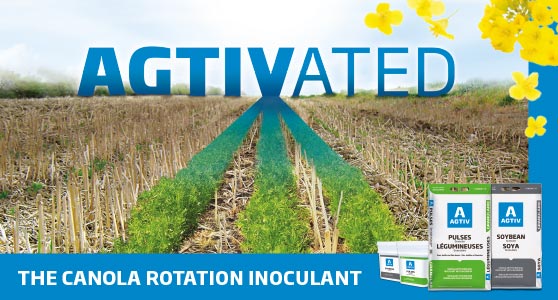|
 |
| |

|
| |
HOW MYCORRHIZAE HELP YOU
COUNTER REDUCED YIELD AFTER CANOLA
|
| |
Many agronomists and retailers in Saskatchewan and Manitoba have successfully recommended AGTIV® at the time of seeding into canola stubble. Growers have seen the benefits in the bin, and continue to integrate inoculants with mycorrhizae for proven results. Mycorrhizae are beneficial symbiosis between mycorrhizal fungi and plant roots. They CONNECT roots to soil thanks to the development of a secondary root system that reaches more nutrients and water. Therefore, get more out of the fertilizer you’ve already invested into the crop.
It is well known that crops following canola in a rotation generally tend to demonstrate reduced yield, compared to results when seeded after another crop. It can largely be explained by the relationship (or lack of relationship) between canola and mycorrhizae. Furthermore, canola roots exude a toxic compound that reduces populations of beneficial microorganisms in the soil. A study by Gavito and Miller1 examined the presence of mycorrhizae in a corn crop following canola. They discovered it took 62 days for the mycorrhizae population to return to the same level it was before the canola crop. AGTIV® gives you an early start by introducing mycorrhizae close to the seed at seeding, bringing the full benefits of increased nutrient and water uptake.

AGTIVate the soil on your farm and maximize your yield potential in field following canola. Learn more on PTAGTIV.com and consult the proven yield results of third party trials comparing AGTIV®’s dual inoculant (rhizobium & mycorrhizae) to different inoculants on the market for peas, soybeans and lentils.
1 Gavito, M. E. and M. H. Miller, 1998. Changes in mycorrhizal development in maize induced by crop management practices. Plant Soil. 198: 185-192.
|
| |
AGTIV®, the only brand on the market to offer the powerful combination of rhizobium & mycorrhizae in one application.

|
| |
|
| | |








